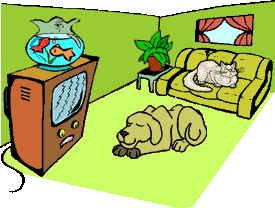Hands-on Activities: Habitats
Grade Level 2-3
Essential Question Why does each living thing live only in certain places?
 Objective Students should begin to understand how living things establish a habitat based on the land, air, water, and other living things in the area.
Materials paper, pencils, and crayons or markers
Approach Ask your students to list or draw the types of buildings where they live. Common responses would include houses, apartments, buildings, offices, community centers, and schools. Ask your students to write or draw their answers to the following questions:
What are the land, air, and water inside these buildings like?
What living things can you find inside each of these buildings? (This list may include people, house plants, potted trees, mold, cats, dogs, and houseflies.)
What are the land, air, and water outside these building like?
What living things can you find outside each of these buildings? (This list may include moss, grass, ivy, birds, and squirrels.)
Why does each of these living things live where it does?
How does each of these living things affect the place where it lives?
How do land, air, water, and other living things affect where things live?
Reflection Ask the students to imagine taking the things that live inside a building to the outside. Ask them to imagine bringing things that live outside a building to the inside. They should write or draw a brief description of the results of this switch. They can share these stories or drawings with their classmates. Discuss the consequences of moving living things out of their habitats.
Content for this activity provided by Dr. Carol Hochman. Illustration © 2003 www.clipart.com. |











